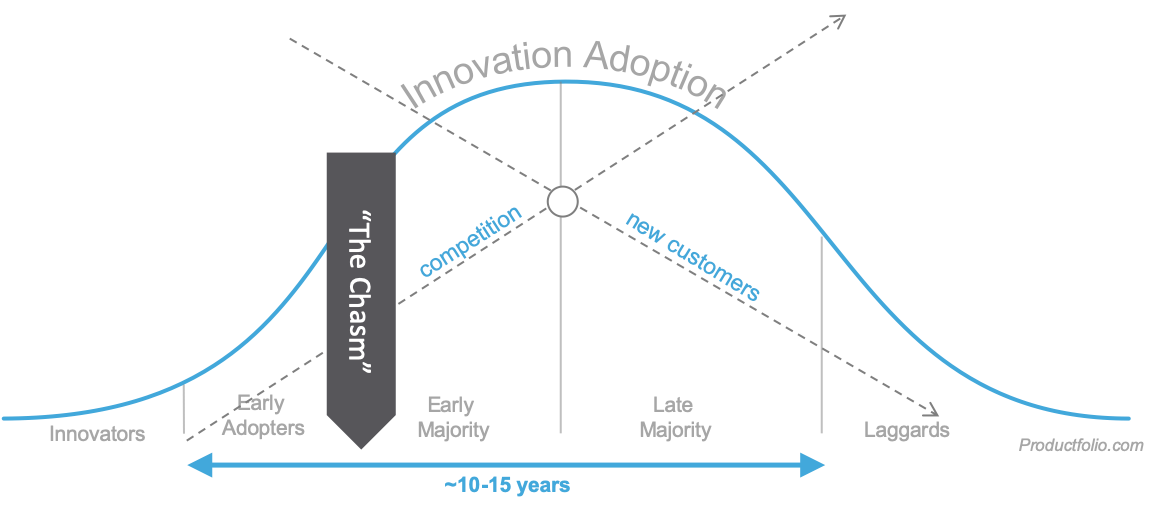
The adoption of new products and innovations is an intricate phenomenon, intricately woven into the fabric of social dynamics and consumer behavior. Understanding which adopter group emerges first in this landscape is pivotal for businesses, marketers, and innovators alike. The delineation between different adopter categories is vividly illustrated in the Innovation Adoption Curve, a model that categorizes consumers based on their willingness to embrace new offerings. This exploration will delve into the nuances of the Innovators—the initial group to adopt new products—while revealing the deeper motivations that underscore their behavior.
The Innovation Adoption Curve delineates five distinct categories of adopters: Innovators, Early Adopters, Early Majority, Late Majority, and Laggards. Each segment possesses unique characteristics that affect their approach to new technologies and products. Yet, amidst this classification, the Innovators hold a particularly intriguing status as the vanguard of product adoption.
Innovators, constituting approximately 2.5% of the population, are often characterized by their appetite for risk and their intrinsic motivation to explore the uncharted. This initial cohort is driven by a deep-seated curiosity and an unrelenting desire to experiment with new ideas. They often perceive themselves as trendsetters, relishing the notion of being ahead of the curve. This propensity for novelty can be attributed to several underlying factors, including personality traits, socioeconomic status, and environmental influences.
One salient attribute of Innovators is their high tolerance for uncertainty and risk. Unlike more cautious consumer segments, they are undeterred by potential failures. This aversion to risk is not merely whimsical; it is often indicative of a broader psychological profile that favors exploration and innovation. Their willingness to engage with products that may not yet be fully developed or vetted allows them to gain early insights into performance and satisfaction, often leading to influential feedback that can shape product refinement.
The socioeconomic backdrop of Innovators also plays a critical role in their adoption behavior. Typically, this group exhibits higher levels of education and greater access to financial resources. Their economic stability permits them to take risks that others might avoid. Affluent and educated individuals are often more likely to encounter new technologies—thanks to their social networks, occupational environments, and access to information—thus positioning themselves as early users of groundbreaking products.
Additionally, environmental influences cannot be underestimated in understanding the Innovator’s journey. The presence of stimulating ecosystems—such as urban centers rife with innovation, technology hubs, and vibrant social circles—can significantly bolster the propensity for innovators to adopt new products. These environments foster collaboration and information exchange, reinforcing the Innovator’s status within their communities. Furthermore, peer recognition often motivates Innovators to seek out and advocate for new technologies, amplifying their adoption influence on subsequent groups.
Another pivotal aspect of the Innovators is their propensity for community engagement, particularly in niche markets. They often congregate in specialized forums, social media groups, and industry events, contributing to discussions that further propagate the adoption of innovations. This interconnectedness not only allows them to share experiences and insights but also establishes a critical mass of knowledge that can streamline the educational process for Early Adopters, who follow closely behind.
In stark contrast to the Innovators, Early Adopters—comprising about 13.5% of the population—demonstrate a more measured approach to product adoption. While they are indeed keen to embrace change, they do so with an analytical mindset, often waiting to gauge the responses of Innovators and to evaluate the practical implications of a new product. This tendency illustrates the dynamic interplay between these two groups, wherein the actions of the Innovators pave the way for subsequent adoption phases.
The Innovators’ role as catalysts extends beyond mere product usage; it encompasses a broader responsibility as informers and educators. Their early interactions with products often yield critical insights that help streamline functionality, enhance user experiences, and ultimately drive product success. This iterative feedback loop emphasizes the symbiotic relationship between Innovators and entrepreneurs, creating a fertile ground where future innovations can thrive.
Moreover, understanding the psychological motivations of Innovators can provide profound insights for marketers. Crafting targeted marketing strategies that resonate with Innovators involves acknowledging their pioneering spirit. Campaigns that emphasize uniqueness, exclusivity, and innovation itself will likely appeal to this group, encouraging them to champion products within their networks. The interjection of storytelling that highlights transformative potential can also engage their emotional faculties, actively driving their participation.
While the Innovators undoubtedly lay the groundwork for product adoption, their endeavors should not overshadow the complexities that other adopter groups contribute to the innovation ecosystem. The Early Adopters, who often serve as the link between Innovators and the larger market, play a crucial role in transforming niche usage into mainstream acceptance. Their cautious yet optimistic approach often demands a delicate balance between the audacity of Innovation and the pragmatism of market viability.
In conclusion, the Innovators stand out as the first group to embrace new products within the framework of the Innovation Adoption Curve. Their unique combination of risk tolerance, socioeconomic stability, and community engagement positions them as pivotal figures in the landscape of innovation. Their motivations are as multifaceted as the products they adopt, reflecting a complex interplay of personal characteristics and external influences. Understanding this adopter group is essential for businesses aiming to harness market opportunities, as they hold the key to transforming nascent ideas into widely accepted breakthroughs.
